Servicios Personalizados
Articulo
Indicadores
Links relacionados
-
 Citado por Google
Citado por Google -
 Similares en Google
Similares en Google
Compartir
Journal of the Southern African Institute of Mining and Metallurgy
versión On-line ISSN 2411-9717
versión impresa ISSN 2225-6253
J. S. Afr. Inst. Min. Metall. vol.116 no.7 Johannesburg jul. 2016
http://dx.doi.org/10.17159/2411-9717/2016/v116n7a5
PAPERS - DANIE KRIGE GEOSTATICAL CONFERENCE
The basic tenets of evaluating the Mineral Resource assets of mining companies, as observed through Professor Danie Krige's pioneering work over half a century
W. Assibey-Bonsu
Gold Fields Limited
SYNOPSIS
This paper constitutes a write-up of the first Professor Danie Krige memorial lecture in 2014, which was organized by the University of the Witwatersrand in collaboration with the Southern African Institute of Mining and Metallurgy (SAIMM) and the Geostatistical Association of Southern Africa, at which his wife, Mrs Ansie Krige, the SAIMM, and Professor RCA Minnitt also spoke. The memorial lecture was presented by his previous PhD graduate student, Dr Winfred Assibey-Bonsu.
During that inaugural memorial lecture, the SAIMM highlighted three activities that the Institute would undertake going forward, so as to remember this great South African mining pioneer:
►The publication of a Danie Krige Commemorative Volume of the SAIMM Journal
►An annual Danie Krige Memorial Lecture to be facilitated by the School of Mining Engineering at the University of the Witwatersrand
►The annual award of a Danie Krige Medal.
What follows is both a tribute to his work and a testimony to the great man's deep personal integrity, belief in family, humility, and faith in Christ: all of which led him to become a giant not only in the South African mining industry, but indeed worldwide.
Keywords: geostatistics, kriging, conditional bias, block model, regionalized variables, regression, ore evaluation
Introduction
It has been said that 'we make a living by what we receive, but we make a life by what we give'. Professor Krige epitomized this in both thought and deed, by showing that true success in life does not revolve around material accomplishments accrued as an individual, but is defined by that which one does and leaves for others.
It was the author's privilege to be associated with Professor Krige for over 20 years, both initially as a student during doctoral studies at the University of the Witwatersrand and later with him as mentor, counsellor, and 'father figure' for the period that followed.
This paper will cover the two aspects that defined Professor Krige; firstly his personal life and career, including the achievements of both; while the second part will briefly touch on his immense contribution to industry and the world for over half a century, through his pioneering work in ore deposit evaluation, economics, and of course geostatistics. Indeed, his passing was recorded in Wikipedia under 'notable persons', a distinction he shared with renowned figures such as Margaret Thatcher.
The great man - Professor Danie Krige
Family and faith
This memorial lecture would be incomplete without firstly throwing light on some of the things Professor Krige held very dear in his life, as told in his interview in 2012 with Professor R.C.A. Minnitt of the University of the Witwatersrand.
Professor Krige was born in Bothaville in the Free State and was the youngest of nine children born to a pastor.
Professor Krige was a devout Christian, who always emphasized that what made a difference in his life was his belief in Jesus Christ. He also acknowledged that he had been the recipient of gifts of grace from the Creator - 'grace given to him' - drawing attention to six specific areas, in which he could identify the grace of the Almighty at work in his life and career:
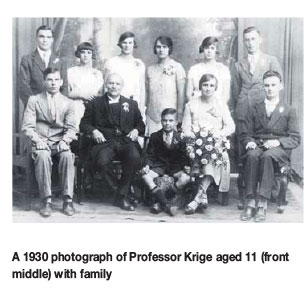
The first gift of grace
It was a tribute to his parents for the practical application of godly lifestyle, the establishment of a firm foundation, and a life philosophy that was modelled by them in every area of life - an example being, that even with the limited resources at their disposal, they ensured that seven of the nine siblings received a tertiary education.
The second gift of grace
The second of the gifts of grace that he acknowledged was the support he received from his two spouses. He was happil married for 45 years to his first wife (until her death), and thereafter for 20 years to Ansie.
The third gift of grace
The third gift of grace was the way in which his career developed, and the various changes in direction that it took, as his research unfolded.
The fourth gift of grace
The fourth gift of grace was that when he returned to work a Anglovaal, the company began to apply his advanced methods of evaluation on their mines.
The fifth gift of grace
The fifth gift of grace was that on retirement from Anglovaal at the age of 60, he received the unexpected opportunity of taking up the Chair of Professor of Mineral Economics at the University of the Witwatersrand, which he occupied for the next 10 years. This enabled him to teach and undertake extensive consulting work for mining companies both locally and internationally, and was, in his opinion, a great blessing
The sixth gift of grace
The final gift of grace was that after leaving the University o the Witwatersrand, he was still able to undertake extensive national and international consulting work, which kept him occupied and young for the following 20 years.
He also acknowledged with deep gratitude that while the opportunities were presented to him, it was his responsibility to make good use of them and that without these gifts of grace, his life's work would not have been possible.
The photos that follow bear testimony to his strong belie: in family values, those same ones he was blessed with as a young boy.
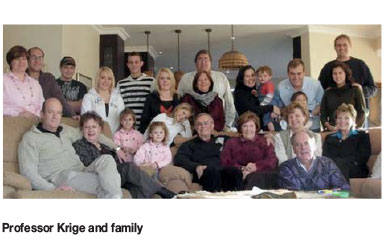
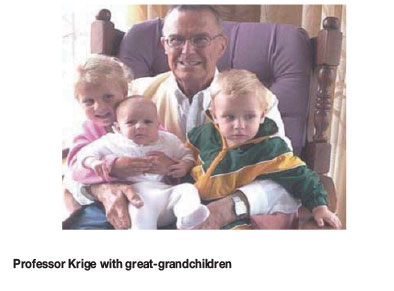
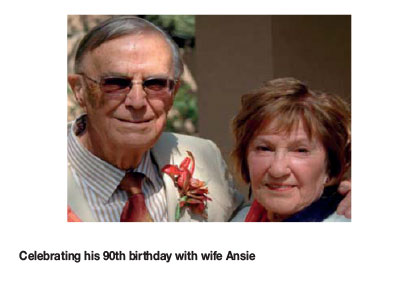
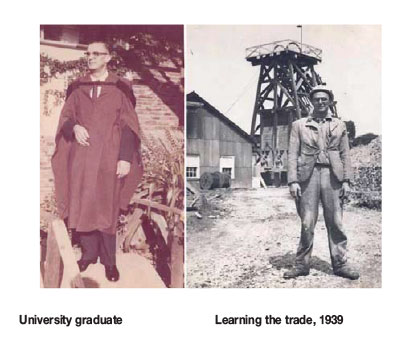
Career, achievements, and awards
Professor Krige matriculated from Monument High School at the age of 15 and in 1938, at the age of 19, graduated as a Mining Engineer from the University of the Witwatersrand. It was clear early on that he was destined for great achievements.
The two photographs above show the great difference between the robe of a university graduate and typical clothes of an underground miner, and provide a perfect illustration of Professor Krige's values regarding theoretical developments aimed at solving practical problems.
Career
Professor Krige worked with Anglo Transvaal on a number of gold mines on the Witwatersrand until 1943, and thereafter joined the Government Mining Engineering Department, where he worked for a further eight years. He spent time studying data and developing mathematical models. He returned to industry as Group Financial Engineer of the Anglovaal Group until 1981, when he 'retired'. He then spent another ten years (of his 'retirement') as Professor of Mineral Economics at the University of the Witwatersrand.
Professor Krige's seminal papers, published in the Journal of the Chemical, Metallurgical and Mining Society of South Africa, led to additional fundamental research in France on 'regionalized variables' by Professor George Matheron and his team. Professor Matheron named the new method of linear estimation of the regionalized variables using a spatial model 'kriging', in recognition of Professor Krige's distinguished pioneering work.
His 1951 paper, based on his MSc (Eng.) thesis at the University of the Witwatersrand, expounded his pioneering work in geostatistics in more detail. His research and paper covered and assisted with the statistical explanation of conditional biases in block evaluation. It stimulated the use of regression corrections for routine ore reserve evaluations by several mines, and the technique was essentially the first elementary basis of what is now known as kriging. The paper introduced, inter alia, the basic geostatistical concepts of support, spatial structure, selective mining units, and grade-tonnage curves. The concept of recoverable resources/reserves in current use is based on what is known as 'Krige's relationship'.
Kriging is currently applied worldwide in the fields of exploration, ore evaluation, environmental studies, petroleum, agriculture, fisheries, and other disciplines. Professor Krige's outstanding influence on the worldwide mining industry is visible every day, as shown by the decision-making processes followed by international mining companies.
Over the course of his career, he published some 96 technical papers, including the Geostatistics Monograph, the first in the Monograph Series of the SAIMM. A complete record of all his publications is available digital format from the SAIMM.
Dedicated service
As a professional engineer, Professor Krige served for many years on the Mining Committee of the Engineering Council of South Africa and on the Council of the SAIMM. He was a co-founder of the International Association of Mathematical Geology, the Geostatistical Association of Southern Africa, the Geostatistical Association of Australia, and the Statistical Association of South Africa.
He also served as a director of several companies, on the sub-committee of the South African Prime Minister's Economic Advisory Council during 1967/8, as well as on various committees of the South African Chamber of Mines. He was a member of the SAMREC Working Committee for The South African Code for Reporting of Exploration Assets, Mineral Resources and Mineral Reserves (SAMREC Code) as first published in 2000.
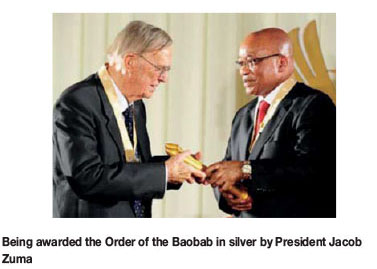
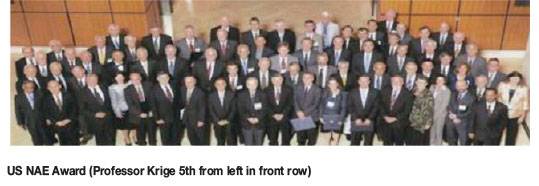
Amongst all of this, he still managed to find time to design the State aid formula, which assisted a large number of gold mines to survive the period of low gold prices; establish the original South African uranium contracts; and in 1955 and writing in Afrikaans, publish probably one of the first papers on risk analysis for new mining investment. He also gave major inputs in the fields of financial analysis and taxation.
Professor Krige was especially committed to the Application of Computers and Operations Research in the Mineral Industry (APCOM) symposia. He was South Africa's representative on the International APCOM Council from its inception, served as the Chairman of Council, and was the first member outside of the USA to be elected to this position. He initiated and was directly involved with all arrangements for the APCOM symposia held in South Africa (in 1972, 1987, and 2003), and is believed to have attended all APCOM symposia until he was almost 90 years old. In 2003, two weeks after a major operation, he managed to convince his medical doctors to allow him to attend the 2003 APCOM in Cape Town, South Africa, where he was a keynote speaker and also presented two other papers.
During his time as a Professor of Mineral Economics at the University of the Witwatersrand, he was responsible for postgraduate courses in geostatistics and mineral economics, and supervised many masters and doctoral theses. While at the university and afterwards, he presented courses in geostatistics and lectured at South African universities as well as universities in Australia, Germany, Taiwan, Chile, Russia, and China, to name but a few. He also still found the time to undertake valuable consultancy work locally and internationally, and participated in and contributed to many international congresses all over the world.
Achievements and awards
Over his lifetime, Professor Krige was the recipient of numerous local and international awards, too many to mention all. His academic achievements and awards included:
►DSc (Eng.) 1963, University of the Witwatersrand
►DIng (HC) 1981, Honorary Degree, University of Pretoria
►Honorary Doctorate from Moscow State Mining University
►Honorary Doctorate from the University of South Africa (UNISA)
►Order of Meritorious Service Class 1, Gold, awarded by the South African State President
►The highest award of the SAIMM, the Brigadier Stokes Award, in 1984
►Many other merit awards from the SAIMM, including two gold medals in 1966 and 1980 and two silver medals in 1979 and 1993
►International Association of Mathematical Geology -William Krumbein Medal, 1984
►One of the highest awards from the American Society of Mining Engineers - the Daniel Jackling Award
►Several awards from APCOM International Council, including the Distinguished Achievement Award, 1989
►Elected as Foreign Associate of the US National Academy of Engineers (NAE) 2010, the first South African to ever receive this award, for his distinguished contributions to Engineering
►Order of the Baobab in silver - awarded by President Jacob Zuma.
Professor Danie Krige's work on essential tenets in evaluating the mineral resource assets of mining companies
Although it is impossible to provide a comprehensive list in this paper, the author will try to detail at least some of the many principles that Professor Krige brought forth over half a century.
Historical background and motivation - the capital intensiveness of mining
The mining industry requires very capital-intensive investments. Figures 1 and 2 provide some examples in this regard.


Figure 1 shows that in 2007 Rio Tinto's acquisition of ALCAN, a Canadian aluminium company, cost US$38.1 billion. It further shows that the estimated cost for Billiton's Olympic Dam Project in Australia was US$27 billion.
Figure 2 illustrates that in 2007 Gold Fields Limited acquired the South Deep Gold Mine in South Africa at a cost of US$2.5 billion (the equivalent of R22.2 billion at the then-prevailing exchange rate). It also shows that in 2011 Newmont's acquisition of Fronteer Gold Inc. cost US$2.3 billion, and that Barrick's ongoing development of the Pascua-Lama gold mine in South America was estimated at US$8.5 billion.
Mineral Resources and Mineral Reserves are the fundamental assets of mining companies and capital-intensive investments are made with respect to these. The strategic objective is to explore, acquire, develop, and ultimately mine them, but one critical risk exists in the uncertainty of the estimation of Resources and Reserves. If, after intensive capital investments, it is subsequently found that the expected Mineral Resources and Mineral Reserves were inefficiently estimated or valued, billions of dollars may be lost. Professor Krige's pioneering research work provides technical solutions to mitigate these technical and financial risks when evaluating these fundamental assets.
Essential tenets in evaluating Mineral Resource assets of mining companies based on over half a century of Professor Krige's pioneering work
Data integrity
Professor Krige emphasized the critical importance of data integrity as the life blood of Mineral Resource and Reserve evaluation. Ensuring data integrity includes data validation and authorization, use of standards and blanks with approved laboratories, and also database safety and security, which are all critical requirements of the Sarbanes-Oxley Act of 2002 (SOX) that is necessary for compliance with the New York Stock Exchange regulations.
Geology models
Professor Krige highlighted geology as the foundation of Mineral Resource and Reserve modelling. He emphasized that orebodies differ and that the main geological characteristics, including lithological and structural features, mode of origin and formation, as well as controls of mineralization, are critical inputs in orebody modelling.
He further warned against the dangerous practice of subdividing orebodies, not on geological grounds, but directly on grade only, as this can lead to serious biases, particularly where the data in one or more subdivisions is insufficient to allow proper geostatistical analysis.
Geostatlstlcs technology - technique selection and optimal application
In the field of Mineral Resource and Reserve evaluation, geology and geostatistics are two inseparable sides of the same coin. As stressed above, on the one side geology concentrates on the physical features of the orebody, such as structures, source, deposition, and type of mineralization. Geostatistics is the other side of the coin, and provides mathematical, statistical, and geostatistical models for the analytical data available from sampling, in order to introduce efficient evaluation techniques for Resource and Reserve estimate, and to attach confidence limits to these estimates.
Uncertainty is fundamental in all branches of science and in human life itself. Uncertainty is the reason for the introduction of mathematical and statistical techniques in geology and is behind the birth of geostatistics over half a century ago.
Frequency distribution
The initial efforts in applying classical statistical procedures to orebody evaluation in South Africa date back to 1919 (Watermeyer) and 1929 (Truscott). It was only in the late 1940s and early 1950s that Sichel (1947, 1952) introduced the lognormal model for gold values, and using this model developed the 't' estimator. Departures from the usual lognormal model were largely overcome with the introduction in 1960 (Krige, 1960) of the three-parameter lognormal model, which requires an additive constant before taking logarithms. However, there were still cases that could not be covered by the three-parameter lognormal model, and Sichel (1992) introduced the more flexible compound lognormal distribution, originally developed by him for diamond distributions.
Spatial concepts and the birth of geostatistics and kriglng
Geostatistics as such did not really originate until the basic concept of ore grades as a spatial variable, with a spatial structure, was introduced in 1951/52 by Professor Krige.
This arose firstly from his endeavour to explain the phenomenon experienced on the South African gold mines for many decades, where ore reserve block estimates consistently showed significant undervaluation in the lower grade categories, and overvaluation for estimates in the higher grade categories, during subsequent mining, i.e. what is now known as conditional biases, illustrated in the form of a simple diagram in Figure 3. Professor Krige's pioneering work provided the geostatistical explanation of conditional biases as unavoidable errors resulting from the use of limited data on the periphery of blocks, which was used in evaluating ore reserve blocks. He proposed and implemented corrective measures to eliminate these significant conditional biases. The regression corrections were applied routinely to block estimates on several mines in the early 1950s and represented the actual birth of kriging. The regressed estimate was, in effect, a weighted average of the peripheral estimate and the global mean of the mine section - it was the first application of kriging. It could be called 'simple elementary kriging', being based on the spatial correlation between the peripheral values and the actual grades of the ore in the blocks, and giving proper weight to the data outside the block periphery via the mean. In this way, the spatial concept and kriging were introduced. The concept of 'support' is very basic to geostatistics, and was first covered by Ross (1950), and further developed by Krige (1951), including Krige's variance-size of area relationship.

Spatial structure and variograms
Professor Krige's pioneering work in the early 1950s aroused interest worldwide, particularly in France where, at the instigation of Professor Maurice Allais, Professor Krige's papers were republished in French (Krige, 1955). One of Professor Allais's students, later to become world renowned as Professor George Matheron, started the development of the theory of regionalized variables. Matheron also proposed the use of the variogram to define the spatial structure. This model is an extension and refinement of the concept covered by De Wijs (1951,1953). Professor Krige's regressed estimates were then still called 'weighted moving averages' until Matheron's insistence in the middle 1960s on the term 'kriging' in recognition of Professor Krige's pioneering work.
During 1963 to 1966 (Krige, 1963, 1966) the spatial patterns were defined in far more detail. These studies covered the spatial correlations between individual 'point' sample values, as well as those between regularized data blocks. The corresponding correlograms or covariograms were used on a simple kriging basis for block evaluations. Kriging on a routine basis for ore reserve evaluation was, therefore, already in use on some Anglovaal gold mines more than 50 years ago.
Conditional unbiasedness
It is instructive to observe that on the South African gold mines, the improvement in the standard of block evaluations due to the elimination of conditional biases accounts for some 70% of the total level of improvement achievable today, using the most sophisticated geostatistical techniques. It is for this reason that Professor Krige placed so much emphasis on the 'proper' implementation of the methods to mitigate conditional biases. Thus, the elimination of conditional biases is not only the major contributor to the reduction of uncertainty in assessing the Mineral Resources of mining companies; it is also an integral and fundamental part of any kriging and Mineral Resource and Reserve assessment process.
Conditional biases
The elimination of conditional biases is basic to ore evaluation and all geostatistical procedures, as emphasized by David (1977) in his popular geostatistics book 'Geostatistical Ore Reserve Estimation'. As David states, conditional unbiasedness is the 'key point of Krige's 1951 paper, one of the key points of his 1976 paper but even then, still appeared as a revelation to many people'.
What contributes to conditional biases
Any increase in knowledge and available data relevant to any uncertainty being studied will reduce the level of uncertainty, provided that the knowledge is applied properly. Knowledge will never be perfect and data never complete, and therefore uncertainty will never be entirely eliminated. However, any procedure or technique that does not use all relevant data in order to provide the 'best' perspective on the remaining uncertainty must not be accepted. Professor Krige reported that in his worldwide experience, he unfortunately encountered many cases where practitioners had erred in respect of this fundamental concept. In too many cases, Mineral Resources and Mineral Reserves were estimated from limited data, and further relevant data was ignored. Use of insufficient data can still be a problem today. In 1950 only the peripheral data for each block was used, while now, with the use of geostatistics, the data search routine is still often inadequate, even with the complete database available on the computer. This is often compounded with no advance analysis to determine the minimum search routine required to eliminate the biases, and no follow-up studies to record the presence of these biases and the need to eliminate them.
Practical examples of outcomes of conditional biases
The graphs and tables that follow, some which are taken from Professor Krige's historical and practical work, illustrate the effect and outcomes of conditional biases.
Figure 4 illustrates feasibility block estimates versus final production blast-hole averages for an aluminium deposit. There is no correlation between the feasibility block estimates and those observed during production, as demonstrated by the regression trend, which could lead to significant risk in invested capital. Figure 5 illustrates similar conditional bias problems and demonstrates why they are important, and shows how they result in misclassification of ore blocks, resulting in levels of profit well below what can be achieved. Figure 6 demonstrates the improved estimates for the data in Figure 5 that can be achieved through using 'proper' kriging with an adequate search.



More recent practical examples of conditional biases are illustrated in Tables I and II and Figure 7. Table I, a case study of a historically mined-out open pit, demonstrates that even the latest sophisticated geostatistics method used to estimate recoverable resources can suffer from inherent conditional biases. Table II shows the effect of conditional biases over time, from a historically mined-out case study, with consistently large negative percentage errors for tons and positive errors for grade, over various time periods and cut-offs. Figure 7 illustrates the financial impact of the errors over the respective cut-offs and time periods.



Conditional biases-testing tools
Mineral Resource estimation for a new or an existing mine covers two major stages:
►At the initial or first stage, the data is limited and is obtained either from a broad drill-hole grid or from an initial main development grid
►During the second or final stage, more data becomes available from grade control drilling or from stope faces and auxiliary developments.
Apart from providing a basis for short- and longer term mine planning and viability studies, evaluations are frequently required to provide Resource and Reserve classification figures (Measured/Indicated/Inferred and Proven/Probable), to substantiate a major capital investment and/or the raising of finance. At both stages of evaluation, the evaluation technique should ensure minimum error variances/uncertainty. These requirements are linked closely to the expected slopes of regression of the eventual follow-up values on the original block estimates. Slopes of less than unity indicate the presence of conditional biases, with blocks in the upper grade categories overvalued and low-grade blocks undervalued.
The efficiency of block evaluations
Block evaluations subject to conditional biases have lower efficiencies. Professor Krige in 1996 proposed to define and measure the efficiency as follows:

where:
BV = block variance (i.e. the variance of actual block values, calculated from a variogram)
KV = kriging variance ( i.e. the error variance of respective block estimates).
For perfect evaluations: KV = 0, the dispersion variance (DV) of the estimates (calculated from the observed kriged model) = BV, and then:

Where only a global estimate of all blocks is practical, all blocks will be valued at the global mean, i.e.:

Usually, blocks are valued imperfectly. With no conditional biases:

However, with conditional biases present, this relationship does not hold and then:

because of insufficient smoothing, and

The efficiency of a block evaluation can even be negative if KV > BV. As stressed by Professor Krige, such a situation is unacceptable and the block evaluations will be worthless; yet he encountered several such cases in practice, where the data accessed per block was inadequate.
Critical control limit test for kriged block evaluations In order to avoid unacceptable negative efficiency for block estimates, the following critical control limit test is proposed for the regression slope to test for conditional biases (Assibey-Bonsu, 2014):
Regression slope can be written as:

where LM is the respective Lagrange multiplier for ordinary kriging, and BV and KV are as defined above.
Where only a global estimate of all blocks is practical, all blocks will be valued at the global or sub-domain mean, i.e., KV = BV and efficiency = 0
Substituting KV = BV into Equation [1]

Thus, a regression slope of less than 0.5 will always lead to a negative block efficiency estimate (i.e. worthless kriged estimates). This highlights the danger of accepting block estimates that have a slope of regression less than 0.5.
The critical regression slope limit of 0.5 should only be used to identify blocks that will result with negative kriging efficiencies. Ideal slopes of regression should be greater than 0.95, as proposed by Krige (1996).
An extensive study of some 70 cases by Professor Krige, covering a wide range of spatial and data patterns, indicated a correlation between kriging efficiency and the regression slope (actuals on estimates) of 87.5% (Krige, 1996). Thus the slope (or the extent of conditional biases present) effectively incorporates all the major factors affecting the efficiency of block evaluations.
Smoothing effect of kriging
The absence of conditional biases is unavoidably accompanied by some smoothing, and it is a fallacy to use the data search routine for block evaluation in an endeavour to reduce or eliminate it. Smoothing is inevitable and essential for conditionally unbiased estimates.
This can be explained in terms of a theoretical approach by reviewing the definition of the slope of the line of regression of actuals (Y) on estimated block values (X):

where σyand σxare the standard deviations of actuals and estimates respectively, and r is the correlation coefficient.
If the slope is to be unity, (i.e. slope = approx. 1) for unbiased block estimates and (r) is less than unity, because estimates are never perfect, then:

I.e., the standard deviation (or variance) of the actual or real block values must be larger than that of the estimated block values. The gap between these two variances (the smoothing effect) can therefore be reduced only by increasing the correlation (r) between block estimates and actual values, i.e. by improving the efficiency of the estimation technique or by providing more data. No mathematical manoeuvring can achieve this objective.
Various post-processing techniques are available to remove smoothing effects (e.g., Krige and Assibey-Bonsu, 1999; Journel et al., 2000) and should be applied only to block estimates that are conditionally unbiased.
Conclusion
Professor Danie Krige's basic points of advice for the practitioner
Ensure data integrity
Disastrous errors and critical risks will result from using erroneous data. Various processes that are usually set out in company or mineral resource regulatory body standards and protocols should be followed to ensure overall data integrity. The SAMREC Code, Table 1, provides good guidelines as to those aspects that should be considered and reported on in the relevant Competent Person reports.
Establish all the necessary geological and geostatistical models and parameters
Geology should always be recognized as a vital element in deposit modelling. Experience has shown that geostatistical
Mineral Resource and Reserve assessment, without proper geological input, can also be disastrous and constitute a critical risk. A robust geological model is therefore a prerequisite, and if the geostatistical model does not agree with the geological one, there are grounds for serious concern. Either one or both models should be critically re-examined, so as to establish the essential correlation and validation.
Technique selection and optimal application: Choose an appropriate geostatistical technique and determine the search routine required to eliminate conditional biases and to ensure optimal application
Use effective tools, including slope of regression and block efficiencies, in this regard.
As blocks are mined out, conduct follow-up (reconciliation) studies to validate the Mineral Resource estimates
This is a further important aspect, not only to ensure that estimates have the quality required and that no biases are present, but also to timeously record the differences and facilitate corrective action.
Research new techniques and applications, but validate new techniques properly by way of (follow-up) checks to confirm the absence of biases and the practical advantages to be gained when they are applied in practice.
Final thoughts
The industry seems to be going backwards in certain areas, with a widespread misunderstanding of the causes and consequences of conditional biases. The following are some of the possible causes.
► In certain universities, as well as training provided elsewhere in the industry, geostatistics is taught using commercially available computer programs, with the emphasis being how to use the programs
► Unfortunately, this is what many mining companies expect: graduates or practitioners who are good at operating programs (the 'black box approach'). This does not allow much time for teaching the fundamentals of geostatistics and the consequences of misusing the technology
► What complicates matters is that the universities rarely have large databases to demonstrate the strengths and weaknesses of various methods in different environments, and research is by its own nature geared towards only the development of theoretical geosta-tistics, often based on strong stationarity assumptions.
'after half a century of phenomenal developments in geostatistics, conditional biases which gave birth to this subject, are still encountered in practical applications... the main concern is that this record will be tarnished by the all too ready acceptance (in certain cases) of estimates, which are still conditionally biased. For the future, I would like to see geostatistics continue to grow from strength to strength with new models, techniques and applications, but where these are all validated properly by way of (follow-up) checks to confirm the absence of biases and the practical advantages to be gained when they are applied in practice' Professor Danie Krige.
Professor D. Krige was indeed a pioneering giant, and the South African mining industry is blessed to have had the benefit conferred by his immense contributions. He always gave willingly and unselfishly, with the rewards being not gold, platinum, and diamonds, but the tools for others to utilize in finding and evaluating Mineral Resources, so as to achieve a positive financial return, while minimizing the associated risk. He took the industry far along the road, but the journey is not over and it now remains the responsibility of those that follow to adhere to his principles, and indeed continue to build on them, to ensure his legacy lives on.
Acknowledgements
The author wishes to thank Gold Fields Limited for the support and time it has allowed in collating and presenting this paper.
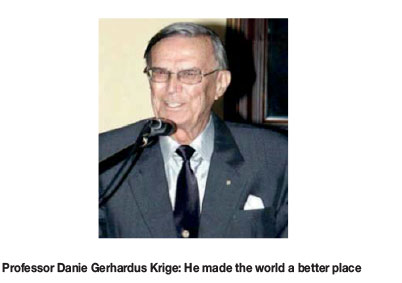
References
Gold Fields Limited. 2007. Annual Report 2007. 30 June 2007. 18 pp. [ Links ]
Assibey-Bonsu, W. and Krige, D.G. 1999. Use of direct and indirect distributions of selective mining units for estimation of recoverable resource/reserves for new mining projects. Proceedings of the 28th International Symposium on Computer Applications in the Mineral Industries (APCOM'99), Colorado School of Mines, Golden, October 1999. [ Links ]
Assibey-Bonsu, W. and Muller, C. 2014. Limitations in accepting localized conditioning recoverable resource estimates for medium term, long-term, and feasibility-stage mining projects, particularly for sections of an ore deposit. Journal of the Southern African Institute of Mining and Metallurgy, vol. 114, no. 8. pp. 619-624. [ Links ]
Bouw, B. 2011. Newmont to acquire Fronteer Gold in $2.3-billion deal. The Globe and Mail. 3 February 2011. [ Links ]
David, M. 1977. Geostatistical Ore Reserve Estimation. Elsevier. [ Links ]
De Wijs, H.J. 1951/53. Statistical ore distribution. Geologie en Mijnbouw, November 1951, January 1953. [ Links ]
Hill, L. 2013. Barrick to suspend work on Pascua-Lama to conserve cash. Bloomberg. 41 october 2013. [ Links ]
Jamasmie, C. 2014. Argentina lobbies to overturn Barrick's Pascua Lama freeze in Chile. www.mining.com. 15 February 2013. [ Links ]
Journel, A.G., Kyriadkidis, P.C., and Mao, S. 2000. Correcting the smoothing effect of estimators: a spectral postprocessor. Mathematical Geology, vol. 32, no.7. pp. 787-813. [ Links ]
Krige, D.G. 1951. A statistical approach to some basic mine valuation problems on the Witwatersrand. Journal of the Chemical, Metallurgical and Mining Society of South Africa, December 1951. pp. 119-139. [ Links ]
Krige, D.G. 1952. A statistical analysis of some of the borehole values in the Orange Free State goldfield. Journal of the Chemical, Metallurgical and Mining Society of South Africa, September 1952. pp. 47-64. [ Links ]
Krige, D.G. 1955. Travaux de M.D.G.KRIGE sur l'evaluation des gisements dans les mines d'or sudafricaines. Annales des Mines, December 1955. [ Links ]
Krige, D.G. 1960. On the departure of ore value distributions from the lognormal model in South African gold mines. Journal of the Southern African Institute of Mining and Metallurgy, vol. 61. pp 231-244. [ Links ]
Krige, D.G. and Ueckermann, H.J. 1963. Value contours and improved regression techniques for ore reserve valuations. Journal of the South African Institute of Mining and Metallurgy, May 1963. pp. 429-452. [ Links ]
Krige, D.G. 1966. Two-dimensional weighted moving average trend surfaces for ore valuations. Proceedings of the Symposium on Mathematical, Statistics and Computer. Applications in Ore Valuation. South African Institute of Mining and Metallurgy, Johannesburg. pp 13-38. [ Links ]
Krige, D.G. 1978. Lognormal-de Wijsian Geostatistics for Ore Valuation. Monograph Series no.1. South African Institute of Mining and Metallurgy, Johannesburg. [ Links ]
Krige, D.G. 1996. A practical analysis of the effects of spatial structure and data available and used, on conditional biases in ordinary kriging. 5th International Geostatistics Congress, Wollongong, Australia. [ Links ]
McCrae, M.A. 2013. The worst mining deal ever: Rio Tinto buying Alcan for US$38.1 billion. www.mining.com. 15 February 2013. [ Links ]
Minnitt, R.C.A. 2012. Thoughts from an interview Professor D. Krige gave to Professor R.C.A. Minnitt during 2012. Personal correspondence. [ Links ]
News.com.au. 2012. BHP Billiton's decision won't be covered by tax hike says SA Premier Jay Weatherill. www.news.com.au/finance/business/bhp-cancels-30-billion-olympic-dam-expansion-in-south-australian-outback/story-fnda1bsz-1226455884519 23 August 23 2012. [ Links ]
Ross, F.W.J. 1950. The development of some practical applications of statistical value distribution theory for the Witwatersrand auriferous deposits. MSc (Eng.) thesis, University of the Witwatersrand, Johannesburg. [ Links ]
Sichel, H.S. 1947. An experimental and theoretical investigation of bias error in mine sampling with special reference to narrow gold reefs. Transactions of the Institution of Mining and Metallurgy, vol. 56. pp. 403-473. [ Links ]
Sichel, H.S. 1952. New methods in the statistical evaluation of mine sampling data. Bulletin of the Institution of Mining and Metallurgy, June 1952. pp. 261-288. [ Links ]
Sichel, H.S., Kleingeld, W.J., and Assibey-Bonsu, W. 1992. A comparative study of the frequency distribution models for use in ore valuation. Journal of the South African Institute of Mining and Metallurgy, vol. 92, April 1992. pp 91-99. [ Links ]
Trustcott, S.J. 1929. The computation of the probable value of ore reserves from assay results. Transactions of the Institution of Mining and Metallurgy, vol. 39. pp 482-496. [ Links ]
Watermeyer, G.A. 1919. Application of the theory of probability in the determination of ore reserves. Journal of the Chemical, Metallurgical, and Mining Society of South Africa, vol. 19. pp 97-107. [ Links ]
This paper was first presented at, The Danie Krige Geostatistical Conference 2015, 19-20 August 2015, Crown Plaza, Rosebank.














